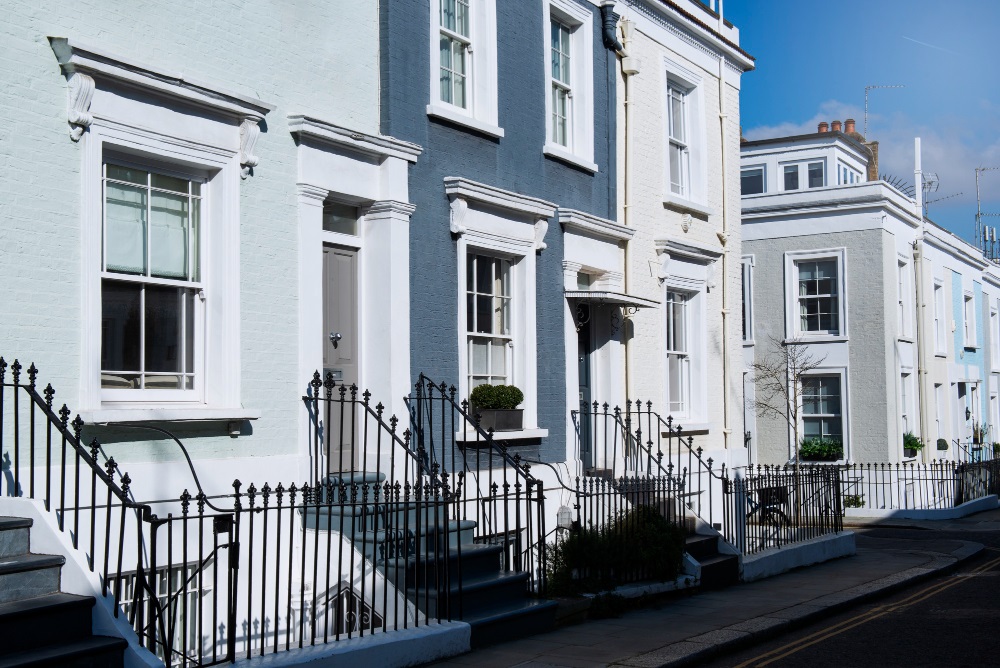
Sunshine Living Meets European Stability
European banks are cooling, but the Iberian peninsula is warming up – not just in temperature, but in mortgage activity. Spain’s property finance market has weathered its storms and now stands on the cusp of a new phase, one defined by access, regulation and opportunity.
At first glance, the Spanish mortgage market of 2025 looks remarkably familiar: Britons eyeing homes in the sun, Germans acquiring second residences in the Balearics, and Northern Europeans swapping grey skies for the Costa del Sol. But peel back the surface and a more evolved picture emerges – one where digital platforms, ECB discipline and tighter regulations are reshaping how people borrow in one of Europe’s most dynamic housing landscapes.
Demand Holds Up Amid Eurozone Volatility
The broader eurozone economy remains in a delicate balancing act. The European Central Bank has held its main refinancing rate steady at 4.00%, aiming to anchor inflation while encouraging a soft recovery. In Spain, this policy has been felt acutely through mortgage pricing, with average fixed deals for residents now hovering around 3.25% to 3.80%. For non-residents – including the ever-present British buyer – that climbs to between 3.90% and 4.75%.
Yet demand refuses to slow. Figures from the Colegio de Registradores show a year-on-year increase of 11.6% in mortgage-backed transactions through May. Among international buyers, 32% used financing – the highest level in a decade. In raw numbers, Britons led the charge once again, followed by Dutch, German, Swedish, and, more recently, North American buyers.
The Spanish Banks Welcome Foreign Income
What’s striking in 2025 is just how hospitable Spain’s banks have become to foreign income. CaixaBank, Banco Sabadell, UCI and Bankinter have all expanded their non-resident mortgage desks. Loans of up to 70% LTV are now common for UK-based applicants with clean credit, while resident applicants may borrow up to 90% in some regions.
“British buyers are no longer seen as exotic or complex,” says one Spanish broker based in Málaga. “Lenders understand pension income, self-employment, even limited company dividends – it’s a mature model now.”
The process is clear-cut: NIE number, bank statements, proof of income, and a healthy deposit – usually 30% or more. Interest-only loans remain rare, and Spanish banks are mandated to issue amortising repayment loans, with full EU disclosure obligations in place.
Fixed Wins the Argument as Buyers Favour Stability
Fixed-rate mortgages have won the argument. More than 70% of new Spanish mortgages in 2025 are on fixed terms – often between 20 and 30 years – as borrowers seek predictability in a world still marked by uncertainty.
Variable deals indexed to Euribor (currently at 3.52%) remain on offer but are seen as more suitable for local, salaried borrowers who can absorb fluctuations. Hybrid options – fixed for 3–5 years, then variable – are gaining popularity and offer competitive entry rates for those expecting future ECB cuts.
The Hotspots for Finance: Where the Money is Flowing
While demand is nationwide, the lion’s share of mortgage-backed deals remains clustered along the Mediterranean coast and in urban centres. Alicante, Valencia, Marbella, and Malaga dominate the coastal numbers. In the cities, Madrid and Barcelona continue to attract buyers from across Europe, drawn by cultural cachet and infrastructure.
Inland, a quiet revival is underway. Castilla-La Mancha, Extremadura, and parts of Aragón are experiencing a modest uptick as buyers priced out of the coast look inland. Here, mortgage approvals are increasing, albeit off a lower base, with properties priced under €150,000 still relatively common.
In the Balearics, Mallorca and Ibiza remain a world unto themselves. Properties average €400,000 to €900,000 and banks lend more conservatively. Foreign buyers are expected to put down 40% or more.
Behind the Numbers: Costs, Fees and Legal Oversight
Spain’s property finance model is transparent, but not without friction. Buyers should expect to spend 10%–13% of the purchase price on associated fees. These include:
Transfer Tax (6%–10%)
Notary and Registry Fees (1.5%–2%)
Mortgage Arrangement Fees (0.5%–1%)
Legal Costs (€1,500–€3,000)
Valuation and Admin Charges (€500–€1,000)
Stamp duty (AJD) on new builds still applies and varies by region. Most mortgages are accompanied by a bank valuation (tasación) and lenders tend to underwrite conservatively, often applying a loan-to-value limit on whichever is lower: the purchase price or bank valuation.
Legal representation is strongly advised. Spanish firms such as Perez Legal Group, Del Canto Chambers and Fuster & Associates specialise in conveyancing for UK nationals and often include mortgage assistance as part of a property legal package.
Digital Spain: The Tech Revolution Quietly Transforming the Mortgage Process
Spain is often thought of as administratively slow – but in the mortgage space, that cliché no longer holds true. Platforms like Idealista, Habeno, Hipotecas.com and MySpanishMortgage.com have revolutionised access. Borrowers can now receive indicative quotes, upload documents, and conduct 90% of the mortgage process remotely – even from the UK.
Brokers also use integrated platforms such as Inari to streamline valuations, affordability checks and approvals. Remote video calls with notaries are allowed for pre-signatures, though the final deed must still be signed in person or by power of attorney. In a globalised market, this blend of tech and tradition is a sensible compromise.
Sustainability Discounts: Green Homes Come with Mortgage Perks
CaixaBank, BBVA and Sabadell have all launched “green mortgage” products, offering small but tangible discounts – usually around 0.20%–0.30% – for homes with EPC ratings of A or B. These apply both to new homes and to existing properties upgraded with energy-efficient retrofits.
EU climate directives, combined with Spain’s NextGenerationEU fund allocation, have encouraged banks to align product lines with the bloc’s sustainability targets. For buyers considering a renovation project, green loans may offer bundled solutions, financing both the home and its improvement.
The Sterling Question: Currency and Long-Term Risk
At £1 = €1.17, UK buyers face a relatively stable exchange rate. But the risk of long-term currency drift remains. Those borrowing in euros over 20–30 years must plan for future fluctuations.
Forward contracts and FX tools are increasingly integrated into mortgage brokering. Firms such as Currencies Direct, TorFX and Moneycorp partner with mortgage platforms to help buyers lock in exchange rates or structure staged transfers.
Many lenders also encourage borrowers to open euro-denominated accounts for automatic debits, reducing conversion friction and timing risk.
A Regulatory Framework that’s Finally Robust
In years past, Spain’s mortgage sector suffered from a reputation for opacity. That’s history now. Since the passage of Mortgage Law 5/2019, Spain has become one of the EU’s most compliant property finance markets.
The law introduced a 10-day cooling-off period, mandatory financial literacy checks, notarial briefings, and cost transparency. Banks are now obliged to stress-test applications at interest rates well above the loan’s actual terms and to justify affordability.
Non-resident buyers benefit from the same rights as residents – including transparency, recourse, and the right to legal translation.
Final Thought: Opportunity for the Informed, Stability for the Patient
Spain’s mortgage market is not overheating, but it is warm – steady, consistent and well regulated. For international buyers, especially those from the UK, it offers a rare balance: Eurozone affordability, climate lifestyle, and mortgage access that is neither punishing nor opaque.
With fixed rates under 4% and access to 30-year loans, buyers with long-term plans have clear incentives. Throw in rising rental yields – over 5% in Madrid and 6.2% in Valencia – and the case for a financed acquisition becomes stronger.
But this is not a speculative market. Spain’s lenders are disciplined, cautious and increasingly digital. Those who do their homework – or work with a regulated broker who already has – will find Spain’s mortgage market in 2025 to be one of Europe’s most accessible and rewarding.
Financial Disclaimer: The information provided in this article is for general informational purposes only and does not constitute financial advice. While every effort has been made to ensure the accuracy of the content, market conditions may change, and unforeseen risks may arise. The author and publisher of this article do not accept liability for any losses or damages arising directly or indirectly from the use of the information contained herein.
Copyright 2025: internationalmortgages.online
Picture:freepik.com




